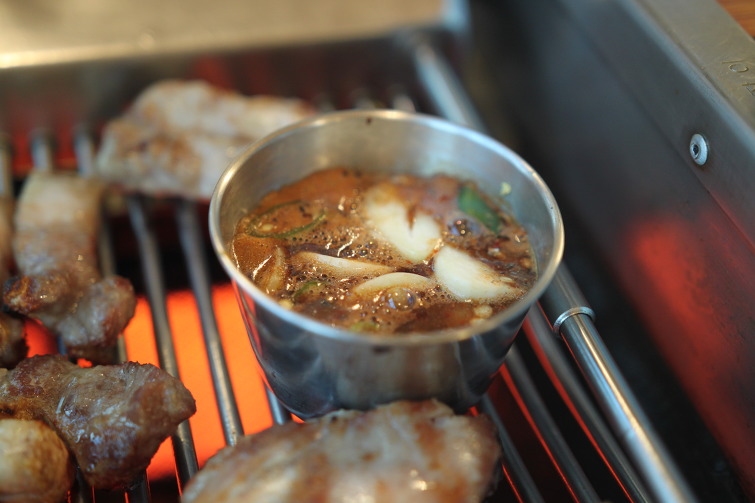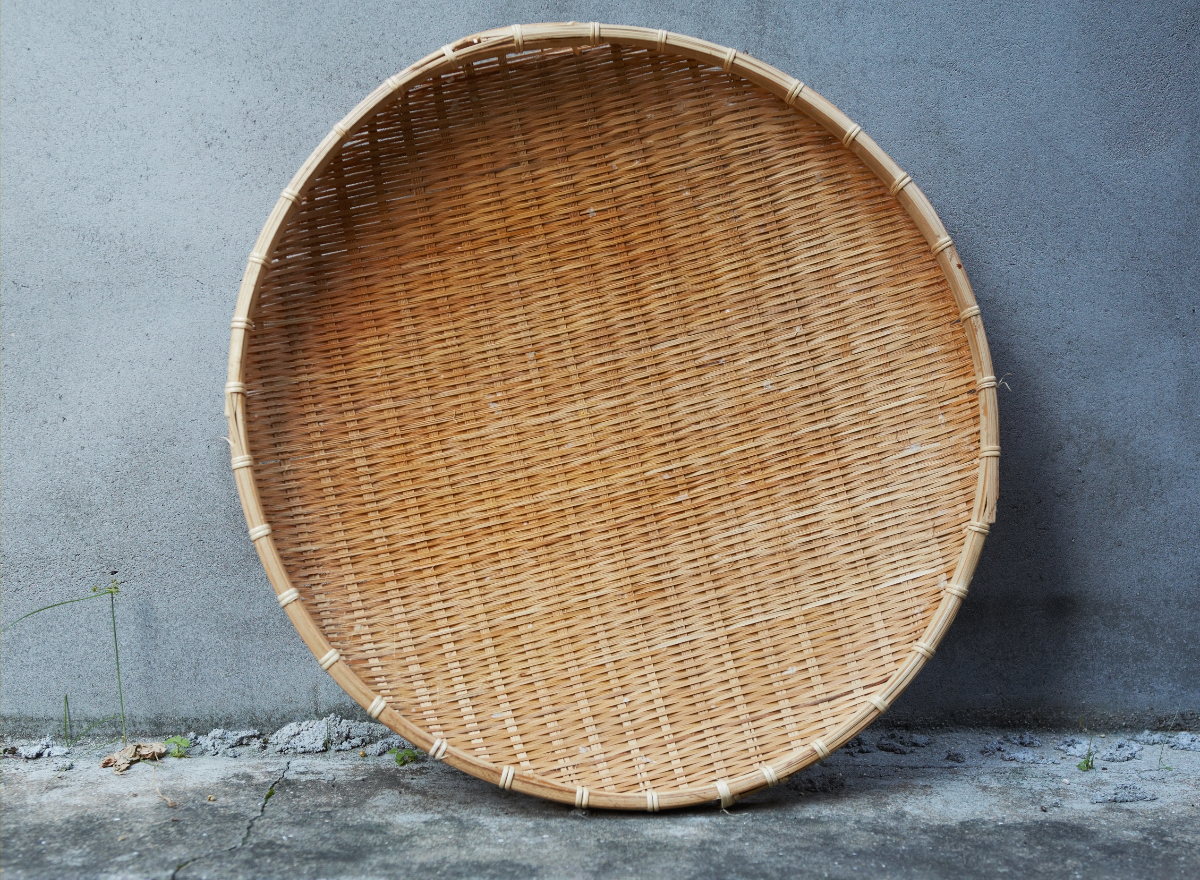|
Myeolchijeot
''Myeolchi-jeot'' () or salted anchovies is a variety of ''jeotgal'' (salted seafood), made by salting and fermenting anchovies. * Along with ''saeu-jeot'' (salted shrimps), it is one of the most commonly consumed ''jeotgal'' in Korean cuisine. In mainland Korea, ''myeolchi-jeot'' is primarily used to make kimchi, while in Jeju Island, ''meljeot'' (; ''myeolchi-jeot'' in Jeju language) is also used as a dipping sauce. The Chuja Islands, located between South Jeolla and Jeju, are famous for producing the highest quality ''myeolchi-jeot''. Names and etymology ''Myeolchi-jeot'' () is a compound of ''myeolchi'' (), the Korean word for anchovy (''Engraulis japonicus''), and ''jeot'' (), the word meaning salted fermented seafood. ''Meljeot'' () is also a compound, consisting of ''mel'' (), the Jeju name for anchovy, and ''jeot''. The Jeju word ''mel'' is cognate with the first syllable ''myeol'' of the Korean word ''myeolchi'', whose second syllable ''-chi'' is a suffix attached to f ... [...More Info...] [...Related Items...] OR: [Wikipedia] [Google] [Baidu] |
Kimchi
''Kimchi'' (; ko, 김치, gimchi, ), is a traditional Korean side dish of salted and fermented vegetables, such as napa cabbage and Korean radish. A wide selection of seasonings are used, including ''gochugaru'' (Korean chili powder), spring onions, garlic, ginger, and ''jeotgal'' (salted seafood), etc. Kimchi is also used in a variety of soups and stews. As a staple food in Korean cuisine, it is eaten as a side dish with almost every Korean meal. There are hundreds of different types of kimchi made with different vegetables as the main ingredients. Traditionally, winter kimchi, called kimjang, was stored in large earthenware fermentation vessels, called ''onggi'', in the ground to prevent freezing during the winter months and to keep it cool enough to slow down the fermentation process during summer months. The vessels are also kept outdoors in special terraces called jangdokdae. In contemporary times, household kimchi refrigerators are more commonly used. Etymology ... [...More Info...] [...Related Items...] OR: [Wikipedia] [Google] [Baidu] |
Banchan
''Banchan'' (, from Korean: ) or bansang are small side dishes served along with cooked rice in Korean cuisine. As the Korean language does not distinguish between singular and plural grammatically, the word is used for both one such dish or all of them combined. The basic table setting for a meal called ''bansang'' (반상) usually consists of ''bap'' (밥, cooked rice), ''guk'' or ''tang'' (soup), ''gochujang'' or ''ganjang'', ''jjigae'', and ''kimchi''. According to the number of ''banchan'' added, the table setting is called ''3 cheop'' (삼첩), ''5 cheop'' (오첩), ''7 cheop'' (칠첩), ''9 cheop'' (구첩), ''12 cheop'' (십이첩) ''bansang'', with the ''12 cheop'' used in Korean royal cuisine. ''Banchan'' are set in the middle of the table to be shared. At the center of the table is the secondary main course, such as ''galbi'' or ''bulgogi'', and a shared pot of ''jjigae''. Bowls of cooked rice and ''guk'' (soup) are set individually. ''Banchan'' are served in sma ... [...More Info...] [...Related Items...] OR: [Wikipedia] [Google] [Baidu] |
Cultural Heritage Research Institute
Culture () is an umbrella term which encompasses the social behavior, institutions, and norms found in human societies, as well as the knowledge, beliefs, arts, laws, customs, capabilities, and habits of the individuals in these groups.Tylor, Edward. (1871). Primitive Culture. Vol 1. New York: J.P. Putnam's Son Culture is often originated from or attributed to a specific region or location. Humans acquire culture through the learning processes of enculturation and socialization, which is shown by the diversity of cultures across societies. A cultural norm codifies acceptable conduct in society; it serves as a guideline for behavior, dress, language, and demeanor in a situation, which serves as a template for expectations in a social group. Accepting only a monoculture in a social group can bear risks, just as a single species can wither in the face of environmental change, for lack of functional responses to the change. Thus in military culture, valor is counted a typical be ... [...More Info...] [...Related Items...] OR: [Wikipedia] [Google] [Baidu] |
Academy Of Korean Studies
Academy of Korean Studies (한국학중앙연구원, AKS) is a South Korean research and educational institute with the purpose of establishing profound research on Korean culture. It was established on June 22, 1978, by Ministry of Education & Science Technology of South Korea (교육과학기술부). The Academy has dedicated to interpreting and analyzing Korean culture in general, defining the academic identity of Korean studies, and educating scholars. Korean Studies Journal published by the Academy of Korean Studies *'' Korea Journal'' *''Review of Korean Studies'' *''Korean Studies Quarterly'' Journals not published by the Academy of Korean Studies *''Korean Studies'', Hawaii *''The Journal of Korean Studies'', Seattle *''Encyclopedia of Korean Culture'' *''Acta Koreana'' See also *List of national universities in South Korea *List of universities and colleges in South Korea *Education in Korea Historically, Korea was differently ruled and named. The official records o ... [...More Info...] [...Related Items...] OR: [Wikipedia] [Google] [Baidu] |
Encyclopedia Of Korean Culture
The ''Encyclopedia of Korean Culture'' is a Korean language encyclopedia published by the Academy of Korean Studies and DongBang Media Co. The articles in the encyclopedia are aimed at readers who want to learn about Korean culture and history, and were written by over 3,800 scholars and expert contributors — mainly associated with the Academy of Korean Studies. ''Munhwa Ilbo'' called it the most extensive encyclopedia of Korean studies. In 2001, the digital edition EncyKorea was published on CD-ROM and DVD. See also *'' Doosan Encyclopedia'' * List of digital library projects *Lists of encyclopedias *List of encyclopedias by branch of knowledge *List of encyclopedias by language *List of historical encyclopedias This is a list of encyclopedias, arranged by time period. For other arrangements, see Lists of encyclopedias. Encyclopedias before 1700 * ''Nine Books of Disciplines'' by Marcus Terentius Varro (116 BC-27 BC) * ''Naturalis Historia'' by Pliny the ... * List of ... [...More Info...] [...Related Items...] OR: [Wikipedia] [Google] [Baidu] |
Onggi
''Onggi'' () is Korean earthenware extensively used as tableware and storage containers in Korea. It includes both Ceramic glaze, unglazed earthenware, fired near 600 to 700°C, and pottery with a dark brown Ceramic glaze, glaze fired at over 1100 °C.The origin of onggi dates to around 4000 to 5000 BCE. The types of earthenware include patternless, Mumun pottery period, ''mumun'', and a red and black variety. The patternless earthenware is made with lumps of clay and fine sand. The predecessor of Goryeo celadon and Joseon white porcelain, the black/red earthenware excludes any sand in its creation process. The earthenware's color is determined by both the iron content of the clay and the method used to fire it. The modern onggi shape dates back from the Joseon era. Many records about onggi are found in ''Sejong Sillok Jiriji'' (, "King Sejong's Treatise on Geography"), which includes further details about Korean pottery: "There are three kilns that make the yellow onggi in Ch ... [...More Info...] [...Related Items...] OR: [Wikipedia] [Google] [Baidu] |
Korean Overseas Information Service
The Korean Culture and Information Service (KOCIS) is an affiliated organization of the Ministry of Culture, Sports and Tourism of the South Korean government and runs 32 Korean cultural centers in 27 countries. The goal of the organization is to further enhance the image of Korea's national brand by promoting Korean heritage and arts through these cultural centers. Main missions ¤ To upgrade the country's nation brand and to publicize government policies * Carrying out projects to boost the nation brand * Providing support for summit diplomacy by organizing cultural events and operating press centers during presidential visits abroad * Promoting Korea's key administrative priorities and major government policies around the world ¤ To promote the spread of Hallyu and to expand cultural exchanges * Operating overseas cultural centers and strengthening their cultural exchange function * Organizing various international cultural exchange programs * Expanding cultural experience p ... [...More Info...] [...Related Items...] OR: [Wikipedia] [Google] [Baidu] |
Korean Brining Salt
Korean brining salt, also called Korean sea salt, is a variety of edible salt with a larger grain size compared to common kitchen salt. It is called ''gulgeun-sogeum'' (; "coarse salt") or ''wang-sogeum'' (; "king/queen salt") in Korean. The salt is used mainly for salting napa cabbages when making kimchi ''Kimchi'' (; ko, 김치, gimchi, ), is a traditional Korean side dish of salted and fermented vegetables, such as napa cabbage and Korean radish. A wide selection of seasonings are used, including ''gochugaru'' (Korean chili powder), sprin .... Because it is minimally processed, there are microorganisms present in the salt, which serve to help develop flavours in fermented foods. References Salts Edible salt Korean cuisine {{Korea-cuisine-stub ... [...More Info...] [...Related Items...] OR: [Wikipedia] [Google] [Baidu] |
Sokuri
''Sokuri'' ( ko, 소쿠리, ) is a round, rimmed woven basket made of finely-split bamboo. It is used for straining washed grains, drying vegetables, or draining fried food in Korea. It measures between 25 and 50 cm in diameter, and has a standing contour measuring some 4 cm. Gallery Persimmons and soybeans.jpg, Persimmons and soybeans on ''sokuri'' Dongtae-jeon.jpg, ''Dongtae- jeon'' on ''sokuri'' See also * Bamboo weaving * ''Wanchojang'' * ''Zaru A is generally a flat or shallow basket made from bamboo used in the preparation and presentation of Japanese cuisine. It also has variations made of plastic or metal similar to a strainer, sieve or colander. ''Zaru'' are air dried after use ...'' References Bamboo weaving Basket weaving Crafts Food storage containers Kitchenware Korean cuisine Korean food preparation utensils {{Kitchenware-stub ... [...More Info...] [...Related Items...] OR: [Wikipedia] [Google] [Baidu] |
Seogwipo
Seogwipo () is the second-largest city on Jeju Island, settled on a rocky volcanic coastline in the southern part of Jeju Province, South Korea. In July 2006, Seogwipo's boundaries were expanded to include the entire southern half of Jeju island. A UNESCO World Heritage site and 2002 FIFA World Cup host, it had a population of 155,691 as of December 31, 2011. History Early history Hundreds of Seogwipo’s oldest archeological artifacts were found in Saengsugwe Cave near Cheonjiyeon Waterfall on the south coast of Jeju. After an extensive excavation by a team of experts from Jeju National Museum in November 2010, hundred of Stone Age artifacts were unearthed. Another ancient location in Seogwipo is the village of Hamo. Artifacts found there during a 2005 excavation include pieces of earthenware and shell mounds from the Neolithic Age. In the beginning, Seogwipo was a part of Tamna, an ancient kingdom of Jeju. The kingdom traded with other nations across the Korean peninsula ... [...More Info...] [...Related Items...] OR: [Wikipedia] [Google] [Baidu] |
Gimjang
Gimjang (), also spelled kimjang, is the traditional process of preparation and preservation of kimchi, the spicy Korean fermented vegetable dish, in the wintertime. During the summer months, kimchi is made fresh, from seasonal vegetables. For one month, starting from the tenth month of the year, people prepare large quantities of kimchi, to provide nutrition throughout winter. Gimjang was listed as a UNESCO Intangible Cultural Heritage in December 2013 and the 133rd Korean Intangible Cultural Property. Customs Kimchi can be eaten as an accompaniment to almost any meal and is an important part of Korean culture. Recipes date back to at least the 13th century, when it was made from vegetables, pickles, and either salt or a mixture of alcohol and salt. Red pepper was added to the ingredients in the 17th century. Modern-day kimchi is typically made from napa cabbage and white radish, although there are hundreds of variations; it may also contain turnip, leek, carrots, and garlic. I ... [...More Info...] [...Related Items...] OR: [Wikipedia] [Google] [Baidu] |

.jpg)




